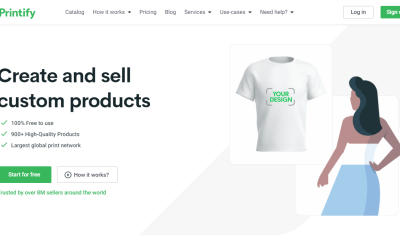Creating Effective Brand Guidelines: The Key to Building a Strong and Consistent Brand Identity
Creating effective brand guidelines is an essential step in developing a strong and consistent brand identity. It serves as a foundation for your company’s aesthetic and message standards, ensuring that your brand is presented consistently across all touchpoints. Before we get into the methods for creating effective brand standards for your organization, let’s define brand rules.

What is Brand guidelines?
Brand guidelines are a set of rules and regulations that dictate how a brand should be presented to the public. They are also known as brand standards or brand style guides. They are a set of visual and messaging aspects that represent a company’s brand identity, including its logo, color palette, typography, tone of voice, and imagery. Brand standards are intended to assure uniformity and accuracy in how a brand is portrayed across all touchpoints, such as its website, social media, advertising, packaging, and other marketing materials. Brand standards assist sustain a brand’s recognition and credibility, as well as reinforce its distinctive value proposition in the eyes of its target audience, by offering explicit instructions on how to use a brand’s visual and message features.
How to create brand guidelines?
In today’s competitive industry, a strong brand identity is essential for any firm to stand out. Creating and adhering to brand rules is one of the most effective strategies to maintain a consistent brand image.
Define Your Brand Identity
Before creating your brand guidelines, you need to define your brand identity. Start by answering these questions:
- What is your brand’s mission and values?
- Who is your target audience?
- What is your brand personality?
Your responses to these questions will assist you in developing a brand identity that is consistent with your company’s values, mission, and vision. As a result, you will be able to design brand standards that accurately reflect your brand identity.
Develop Your Visual Identity
The next step in developing brand standards is to create a visual identity. This covers things like your logo, color scheme, typography, and graphics. When creating your visual identity, keep the following in mind:
- Logo: Your logo is the most important visual element of your brand. It should be simple, memorable, and scalable.
- Color Palette: Your brand’s colors should be consistent across all touchpoints. Choose a primary color palette and secondary colors to complement it.
- Typography: Choose fonts that reflect your brand’s personality and are easy to read across all touchpoints.
- Imagery: Select images that are consistent with your brand’s values and personality.
Establish Your Brand Messaging
Elements of your brand messaging include your brand voice, tone, and message hierarchy. When developing your brand messaging, keep the following in mind:
- Brand Voice: Choose a brand voice that reflects your brand’s personality and resonates with your target audience.
- Tone: Your tone should vary depending on the context and channel you’re using. Establish guidelines for how your tone should differ across channels and touchpoints.
- Messaging Hierarchy: Define the key messages you want to communicate and how they should be prioritized.
Create Your Brand Guidelines Document
It’s time to establish your brand guidelines document after you’ve developed your brand identity, visual identity, and messaging. The following items should be included in this document:
- Brand Overview: Include a brief overview of your brand’s mission, values, and personality.
- Visual Identity: Detail your logo, color palette, typography, and imagery guidelines.
- Messaging: Define your brand voice, tone, and messaging hierarchy.
- Usage Guidelines: Include guidelines for how your brand should be used across different touchpoints, such as social media, advertising, and marketing collateral.
- Examples: Include examples of how your brand should be used in practice to help ensure consistency.
Share and Enforce Your Brand Guidelines
When your brand guidelines document is finished, distribute it to your team, partners, and vendors. Ensure that everyone who generates marketing materials for your brand has access to and knows the rules. Apply the guidelines to ensure that your brand is presented consistently across all touchpoints.When your brand guidelines document is finished, distribute it to your team, partners, and vendors. Ensure that everyone who generates marketing materials for your brand has access to and knows the rules. Apply the guidelines to ensure that your brand is presented consistently across all touchpoints.
Finally, Creating effective brand guidelines is critical for establishing a strong and consistent brand identity. You may build effective brand standards that accurately reflect your business’s identity and help assure consistency across all touchpoints by following these steps.


